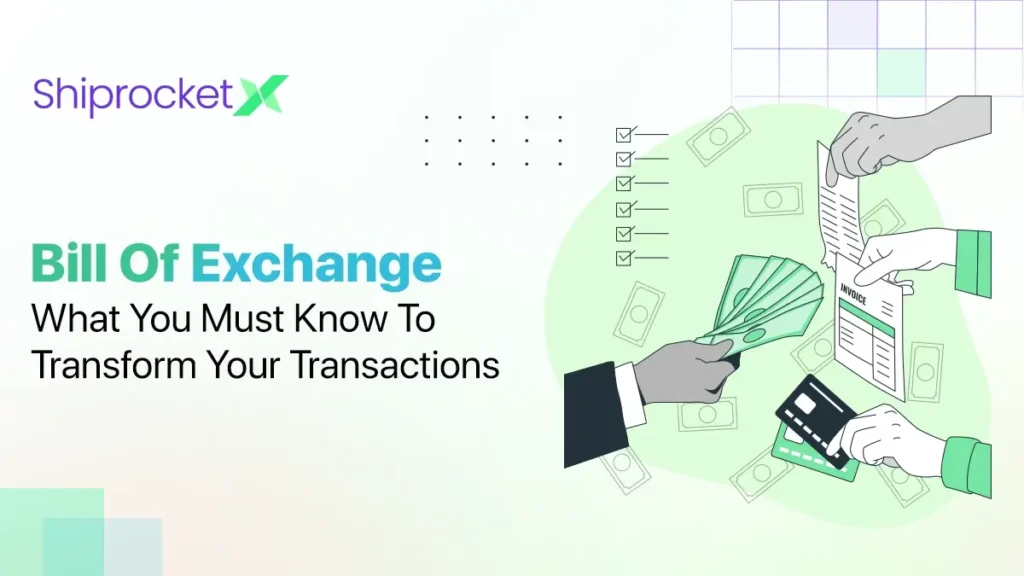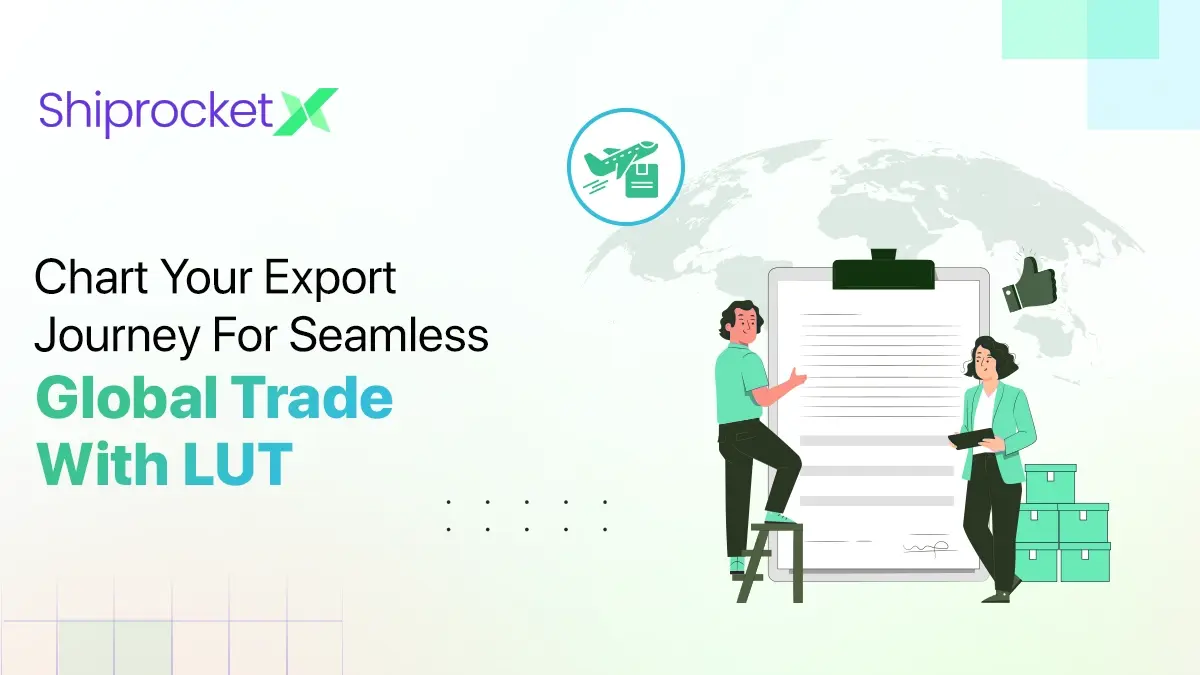Bill of Exchange: Explained for International Trade
- Bill of Exchange: An Introduction
- Mechanics of the Bill of Exchange: Understanding its Functionality
- An Example of a Bill of Exchange
- Structure and Layout of the Bill of Exchange
- Distinctive Traits of the Bill of Exchange
- Global Trade Dynamics: The Role of the Bill of Exchange
- Endorsing the Bill of Exchange: Essential Processes
- A Comparative Analysis: Promissory Notes, Letters of Credit, and Bills of Exchange
- Exploring Variants: Different Types of Bills of Exchange
- Terminology Decoded: Essential Bill of Exchange Definitions
- Conclusion
How do you settle accounts in international trade? What kind of documents support such actions? In the international trading world, most trading happens based on credit. Cash-based trading is almost non-existent. Instead, a bill of exchange is a document that supports such transactions. It is a promise written between the instruments of international and domestic trade transactions.
This blog details all there is to know about the bill of exchange, how it works, and some examples to help you understand it. It also talks about the layout and structure of the bill of exchange, its distinct traits, and more.
Let us dive in.

Bill of Exchange: An Introduction
A written document used in international trade that binds one entity to pay a specified amount to the second entity on demand or at a specified date is known as a bill of exchange. It is very similar to a promissory note. It can be drawn by a bank or even an individual. It is transferable by endorsements.
A bill of exchange helps international traders to complete transactions. However, it is important to note it is not a contract. It simply specifies the terms and conditions of a transaction like the credit terms and accrued interest rate.
Mechanics of the Bill of Exchange: Understanding its Functionality
A bill of exchange transaction can have up to three parties involved. The party that pays the amount specified in the bill of exchange is called the drawee. The receiver of the sum is called the payee. The drawer is the one that ensures that the drawee pays the payee. The drawer and the payee can be the same entity unless the powers of the drawer are given to a third party to create the bill of exchange.
Unlike a cheque, a bill of exchange is a written document. It pays for goods and services purchased. It only includes the terms of the contract. It can specify when the payment is due or demand payment on a specified date. Usance is the term used for the period between the billing and payment.
Interest is not paid with the bill of exchange. Hence, they are essentially post-dated cheques. When payment is delayed, interest may be accrued as per the rate specified in the document. Conversely, the transfer can be made at a discount as well. The date and time along with the amount and parties involved must be highlighted.
When a bill of exchange is issued by a banking institute, it is called a bank draft. The bank that issues the bill must ensure payment. It is called trade drafts when they are issued by individuals. In case the payment must be done immediately, they are known as sight drafts. If the payment must be made in the future, it is called a time draft.
An Example of a Bill of Exchange
For instance, consider a company PQR that buys machine parts from a supplier company IJK for about Rs. 10000. IJK draws a bill of exchange and hence becomes the drawer and the payee. The time stipulated for payment would be 90 days for instance. PQR is now the drawee and will accept the bill of exchange and the goods will be ready for shipping. The bill of exchange will be presented to the drawee for payment after 90 days. Thus, the bill of exchange acts as the acknowledgement sheet between the two entities.
Structure and Layout of the Bill of Exchange
The structure of a bill of exchange is not very complicated. It requires a couple of straightforward details. Here is what a bill of exchange will need:
- Drawer’s address and name
- Drawee’s address and name
- Amount to be paid
- Date and time of transaction
- Maturity date
- Signatures of acknowledgement by both parties for authorisation
Distinctive Traits of the Bill of Exchange
A legally binding document that orders one party to pay a fixed amount to another party is one of the most notable features of a bill of exchange. It can be drawn in any form of currency. However, a bill of exchange is often settled in the currency of the issuing country.
This document is transferable and can be endorsed to another party. It serves as a surety of payment and it is usually accompanied by another document termed promissory note. When the drawee fails to pay the specified amount on the due date, the holder will be allowed to exert legal action to enforce payment.
Global Trade Dynamics: The Role of the Bill of Exchange
The terms for international trade can be extremely complicated and there are different currencies involved in this process with different parties. They also have different legal regulations and time zones. In such cases, a bill of exchange comes in handy. It is an important document that the exporter writes to the importer.
Interestingly, a bill of exchange can include a third entity. The bill can be issued by a bank that becomes the third entity listed on the bill of exchange. In cases where the importer dishonours the bill and fails to make the payment; the payee is liable to complete the payment to the exporter.
Endorsing the Bill of Exchange: Essential Processes
Bills of exchange are transferable between parties. Such a process is called endorsement and it minimises the risk to both parties when the buying party fails to make the payment. Endorsement is a process by which the drawer of the bill shifts the rights to gain the payment under the bill to another party. It is a crucial aspect of negotiation that enables them to function as a payment method and credit instrument in business transactions.
A Comparative Analysis: Promissory Notes, Letters of Credit, and Bills of Exchange
The table below highlights how bills of exchange are different from promissory notes and letters of credit.
| Promissory Note | Letter of credit | Bill of exchange |
|---|---|---|
| A document written by one entity that stipulates the payment of a specified amount to another entity on a specified date. | A document issued by a bank or any other institute on behalf of a purchaser to ensure payment to the supplier on meeting the demands specified in the document. | It is a document that is an unconditional order in writing issued by a seller to a buyer to pay a stipulated amount on demand or a specified future date. |
| The only parties involved are the borrower and lender. | The seller, buyer, and the issuer are involved. | The supplier, buyer, and the payee are involved. |
| Depends on the trust and relationship between the entities. | Ensures payment to the supplier if the conditions are met, thereby reducing the purchaser’s risk. | Payment might or might not be assured based on the acceptance and financial standing. |
| Can be due on the specified date or on demand. | The payment will be due when conditions are met. | They have a stipulated due date or can be done on demand. |
| Used in informal lending and borrowing instances. | Used in international trade to enable secure transactions. | Used domestic and international payments. |
| Negotiability depends on the terms. | It is a non-negotiable agreement. | Negotiability depends on the terms. |
Exploring Variants: Different Types of Bills of Exchange
There are various types of bills of exchange, such as:
- Sight Bill of Exchange: It is payable on demand or a stipulated date post-presentation of the bill.
- Time Bill of Exchange: Such a document ensures that payment is to be made on a set date and not on demand.
- Usance Bill of Exchange: Such a bill is payable after a set period, typically ranging several months.
- Trade Acceptance Bill of Exchange: Such a document is used in international trade and is accepted by the supplier of the goods to the buyer.
- Accommodation Bill of Exchange: It is mainly created to provide financial accommodation to a third entity like a friend or relative.
Terminology Decoded: Essential Bill of Exchange Definitions
Important terms of the bill of exchange are given below:
- Drawer: The issuer or the creator of the bill of exchange is called the drawer.
- Drawee: The entity in charge of making the payment is called the drawee.
- Payee: The entity to whom the payment must be made is called the payee.
- Acceptance: The act where the drawee agrees to pay the amount is called acceptance.
- Endorsement: The transfer of ownership of the bill of exchange to a third entity is called endorsement.
- Maturity date: The date when the payment is due and payable is called the maturity date.
- Noting: Recording any dishonour and protest by the drawee or payee is called noting.
- Discounting: The act of selling a bill of exchange to a bank or institution at a lower rate is called discounting.
Conclusion
A written document that involves the amount to be paid by a customer when demands are met by the seller is called a bill of exchange. It is a written proof that is mostly used in foreign commerce. It is a document that is accepted and acknowledged by both parties. A bill of exchange can have up to three entities involved. The seller can take legal action when the customer fails to make the payment on a specific date or on-demand based on what is mentioned on the bill of exchange. This document acts as proof during international trade. It is not a contract but has the terms of the contract.




